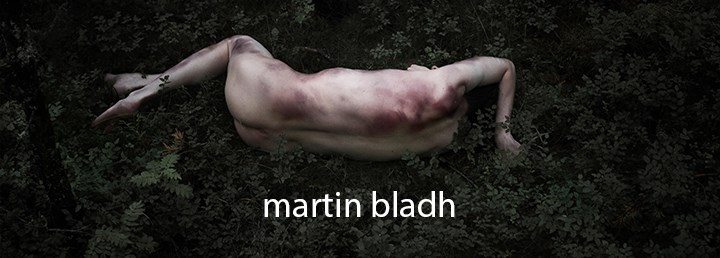
This interview was originally published in January 2017 on Terra Relicta – Dark Music Webmagazine. Tomaz has been kind enough to allow me to re-publish the interview here on This Is Darkness!
Interview with: Martin Bladh
Conducted by: Michael Barnett
Martin Bladh is a multi-faceted artist. Over his years in the public eye, Martin has worked on numerous visual, musical, and performance art projects. He entered the public realm through his power-electronics project, IRM, with Erik Jarl, and later joined by Mikael Oretoft. He would soon join forces with Magnus Lindh creating the musical force know as Skin Area. Martin has also done musical projects with Sektor 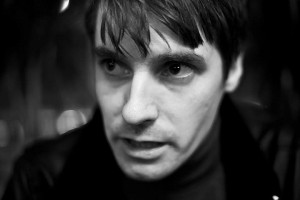 304, entitled Ruby, and with Bo I. Cavefors, entitled The Island Of Death, as well as a number of his own personal musical projects. Delving into the medium of film, Martin has created a handful of videos, many of which can be seen on the DVD accompanying Epicurean Escapism I. He also played a large part in the production of the feature film, Gasper. In the visual art world, Martin has joined forces with Karolina Urbaniak, starting Infinity Land Press. Through Infinity Land Press he has already participated in the production of a number of books, including The Rorschach Text, To Putrefaction, No Breath Of Sound – The History Of Drowning and Darkleaks – The Ripper Genome. With all these projects in the works along with more that I haven’t even mentioned, and others which haven’t yet found their way to the public eye, Martin Bladh is a very busy man. I am honored to have the multi-media artist take a little time out of his dizzying schedule to answer some questions about his art and some others which lead in a more personal direction.
304, entitled Ruby, and with Bo I. Cavefors, entitled The Island Of Death, as well as a number of his own personal musical projects. Delving into the medium of film, Martin has created a handful of videos, many of which can be seen on the DVD accompanying Epicurean Escapism I. He also played a large part in the production of the feature film, Gasper. In the visual art world, Martin has joined forces with Karolina Urbaniak, starting Infinity Land Press. Through Infinity Land Press he has already participated in the production of a number of books, including The Rorschach Text, To Putrefaction, No Breath Of Sound – The History Of Drowning and Darkleaks – The Ripper Genome. With all these projects in the works along with more that I haven’t even mentioned, and others which haven’t yet found their way to the public eye, Martin Bladh is a very busy man. I am honored to have the multi-media artist take a little time out of his dizzying schedule to answer some questions about his art and some others which lead in a more personal direction.
Michael: I have to admit from the start, I was a bit nervous to conduct this interview. So often these days in entertainment, artists follow their own path, without much attention to overarching themes or the history of art. I get the feeling when observing your various forms of art, that there is a serious depth, hidden meanings, allegories, which all need to be taken into account to fully appreciate your body of work. Do you have a formal education in the arts, or has this always been a natural passion for you?
Martin: I’m interested in the history of art, and yes, I’ve studied it at the university as well. Even though you don’t need the faculties I really believe this is something people need to know and understand, before they can call themselves “artist,” or using words such as “important,” “urgent,” “brave” or “original.” I also went to so-called art school for some years, which was, and is nothing but utter BULLSHIT that should be shunned like the plague. I’m sure that at least 95% of all this silly playground nonsense does more damage to the so-called artist to be and the art-world in whole.
Michael: Considering my previous question, do you find that fans often notice the underlying meanings?
Martin: Well, I’ve different kinds of fans. Some of my “music fans” are mainly interested in noise and the pitch of my voice. I mean if you haven’t bought the latest IRM and Skin Area CD’s, read the lyrics and looked at the artworks you have a very vague idea about the content. You can’t listen to an MP3 and experience it, that’s just impossible. Then of course you wouldn’t count as a FAN if you didn’t buy the actual record, right? Saying that, my work has a vagueness, and ambivalence to it, it points you into specific territories but it doesn’t have one specific meaning.
Michael: Are you equally happy to see fans enjoying your art, regardless of their understanding of the underlying meanings?
Martin: I don’t like laziness, which is a huge problem these days. There’s too much information out there and it’s too easy to get it; that instead of really analyse a subject people are just scratching the surface and move on to the next download. I mean, the day people will start to buy kindle art-books everything is fucked! But of course, it’s always nice to be appreciated, even if it’s only for having composed a curious tune, or a framed decorative piece of tapestry.
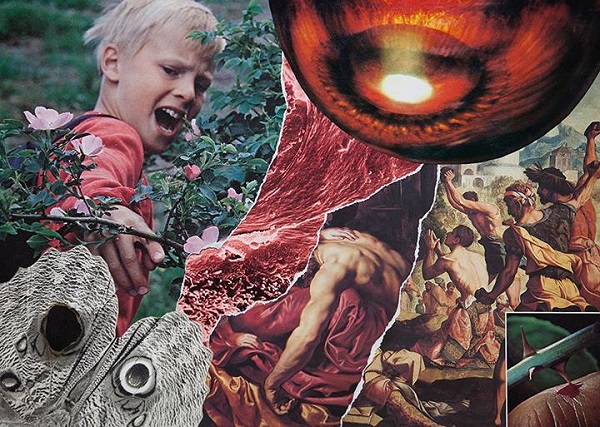
Collage Inspired by Rembrandt’s The Blinding of Samson
Michael: You have recently started a company, Infinite Land Press, with Karolina Urbaniak. Would you like to tell readers a little bit about the goals of the press and some of the recent publications?
Martin: Me and Karolina Urbaniak started Infinity Land Press back in 2013 as a means to publish our own material without having to deal with any middleman. I still lived in Sweden back then and Karolina was based in London. Our first book To Putrefaction (2013), a romantic ode to death and decay, was strictly limited to 50 copies. We then got the idea to publish books with other artists that we admired, such as Dennis Cooper, Michael Salerno and most recently Philip Best, and collaborations between ourselves and other artists – Karolina did Altered Balance with Jeremy Reed and The Void Ratio with Shane Levene, and in the beginning of 2017 me and Jeremy Reed’s book Darkleaks – The Ripper Genome was released. We usually deal in strictly limited editions because that’s what we can afford and stock in our office (which is our living room), and we’ll continue to publish as long as we find material that’s interesting enough. Our credo: Infinity Land is a realm deeply steeped in pathological obsessions, extreme desires, and private aesthetic visions. Having disappeared over the horizon from the nurseries stocked with frivolous babblings of apologetic pleasures, Infinity Land is foundationally a geography configured by the compulsive, annihilating search for impossible beauty.
“True beauty is something that attacks, overpowers, robs, and finally destroys.”
Yukio Mishima
Michael: As I’ve already alluded to, your artistic vision is truly multi-faceted. You have released everything from books, to DVDs, to albums. You have also done some stage shows which combine aspects of all these projects. Can we look at your entire body of work as part of a whole? Is there an over-arching vision which anchors all these ideas into one central theme?
Martin: I like the Wagnerian idea of the Gesamtkunstwerk, where different artistic media bleed together into one synthesis. It might be a weakness, but I’ve never felt satisfied by expressing myself through a single media, and I’ve vivid memories of the suffocating frustration that I went through from the period 1998 – 2003, when sounds and lyrics was my only outlet. The multimedia expression has become an absolute necessity for me, if you read my books DES and The Hurtin’ Club you know what I mean. And yes, every new project I do has a specific content which I try to filter through these various medias.
Michael: Out of all your musical output over the years, I was the most intrigued by your work on Ruby with Sektor 304. The vocal style was totally different than I had experienced on IRM or Skin Area albums. I wonder if you could give us some insight into that album? How it came about as a collaboration between you and Sektor 304. Also, I wonder what your connection is to the character named Ruby, the main focus of the album.
Martin: I’m glad to hear you saying that as I believe it to be highly underrated. The Sektor 304 guys contacted me back in 2012, and wanted me to send them a guest recording for a live broadcast they were doing for the Portuguese radio. When I heard the result I was very pleased and asked them if they wanted to collaborate with me on an album. I remember making clear from the start that this would be something different from what I’ve been doing with IRM and Skin Area, and the guys were very sympathetic and excited about that. The whole narrative and background story of Ruby (the name’s got an alchemical inclination) came out of a clinical study from the late 50ties, about art therapy and schizophrenia which I’ve read. It was based on dialogs between a psychiatrist and patient, how the patient’s explained his painting for the psychiatrist and the interpretation process involved. I kind of re-wrote this material for my own purpose, which (obviously) took it into even darker territories, and that was the birth of the androgynous Ruby.
Michael: I had the pleasure of witnessing an IRM performance last year, on the APEX Fest Tour. The performance was magnificent. You had an extremely theatrical stage presence, which seemed almost choreographed, everything from your facial expressions to body positioning, and the handling of the two microphones. Do you put a lot of preparation into your live sets for all your projects or was this a natural presence which just seemed to be calculated?
Martin: Nothing I do on stage has been prepared or choreographed beforehand; but I’ve done these performances for quite some time now; so I might rely on my body memory. The only so called “preparation” I do is to drink, and let the alcohol sensation peak when I go on stage, I guess it’s somewhat similar to an Dionysian frenzy, and I really work myself up when I’m up there; so I’m not really aware of my body postures or facial expression until watching the reproduction of the show afterwards (which I do very seldom).
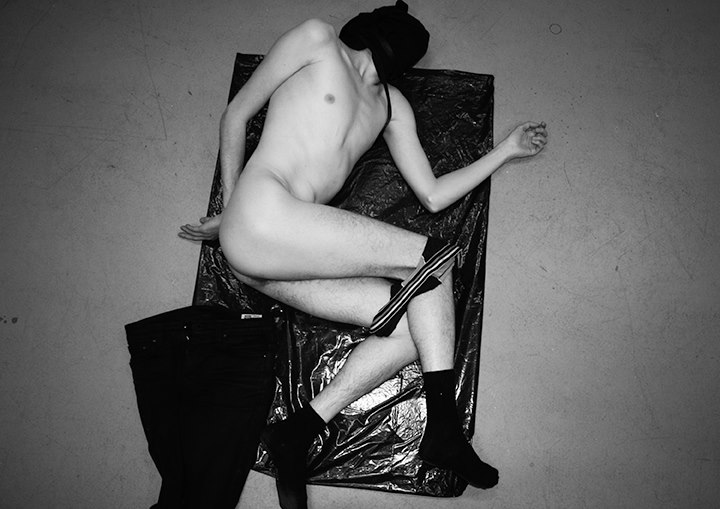
from DES: Sad Sketches
Michael: Continuing on the topic of the APEX Fest, I was delighted to read in the “Through My Eyes” article (you can read that article here) on Santa Sangre Magazine: “Any moment of 2015 you’ll remember on your death bed? The city of Baltimore. I never seen anything like it in the western world. A hellhole. Amazing.” Obviously, coming from Baltimore, I found this remark quite interesting. Baltimore, as with much of the United States and Europe, is currently undergoing a lot of social changes and realizations. I would be interested if you could take that previous statement into a bit more detail, and describe to the readers exactly what you found so different about Baltimore.
Martin: Ha, ha, well I guess that statement was a bit unfair, cause I only saw some of the roughest parts of the city, which actually reminded me of photographs of Berlin 1945, with whole building blocks caving in on themselves. I know there’s another side to the city as well, but I never seen anything like it neither in Western nor Eastern Europe. I remember asking the organiser for a pharmacy and she told me there was one just a couple of hundred meters away, but to get there I should take cab because otherwise it might be too dangerous.
Michael: In 2014, your most enduring musical project, IRM released Closure… through Malignant Records. You also released the track, “Triptych”, which is a sort of crash course of the whole trilogy which included: Indications of Nigredo, Order4 and Closure… Since finalizing this chapter of IRM, have you begun to work on something new, or is IRM currently on hold as you guys focus on other projects like Skin Area, Jarl, and Infinity Land Press?
Martin: IRM haven’t worked on any new material since finalising Closure… , and I’m not sure when we’ll start again. Everything is a bit more complicated since I moved to London and the other two guys are still in Sweden (living in different cities). Our records are recorded and put together very carefully, and the process of making the last two full length albums was very time consuming. Me and Magnus are actually in the process of putting together a new Skin Area record though, and we work on it every time I visit Sweden.
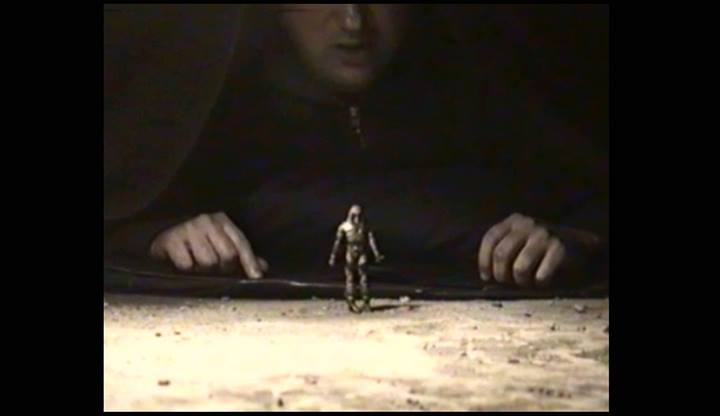
from Gasper
Michael: I recently reviewed the Pale Thorns debut album, Somberland. Pale Thorns is a solo-project by Magnus Lindh, the other half of Skin Area. When I spoke with Magnus, he mentioned that you had looked over his lyrical content on the album. We both agreed that your lyrics are totally unique and deliver extremely powerful imagery. I wonder if you can think back to when you first started writing lyrics. Were you a child when you first put the pen to paper, or did this come later in life as you started IRM with Erik?
Martin: As a kid I had a very vivid imagination, but I was more keen on drawing than writing. It was back in 1992 that I made my first attempts to write – coloured by the second wave of Black Metal – and from what I remember, they were hideously bad. It was later when I started to nurture a genuine interest in literature that something happened. Oedipus Dethroned (2000) would probably be the first serious example of some kind of craft.
Michael: Which writers or filmmakers have been the most influential on you throughout your life? Has this list changed much over the years as you have become an adult?
Martin: As a child I was obsessed with comic book- and James Bond villains, the only “books” I ever read were things like Flash Gordon. When I was a bit older I discovered H.P. Lovecraft and horror films. Then writers like Sade, Burroughs, Lautreamont and Mishima together with filmmakers like Stanley Kubrick, David Lynch and Pasolini turned everything topsy turvy. And then as an adult, “mature” man, I might settle for writer such as Antonin Artaud, Georg Trakl and Jean Genet, and as for film Ingmar Bergman, Fassbinder and Michael Haneke.
Michael: Sweden seems to be a place where so much unique talent enters the public realm, especially when it comes to the darker side of media. What do you think it is about Sweden which produces such dark and introspective artists?
Martin:That’s what an outsider sees when he scratches the surface, dig a little deeper and you’ll find that most of it is rather harmless and PC, filled with individuals who have a morality quite similar to your own mother’s. But yes, there are a lot of acts that originate from Sweden, and some of them are really good. A lot of it might have to do with luxury angst; to live in a safe and pampered society might give you a desire for controlled danger as spice to the boredom of everyday life. Then when it comes to medias such as literature, film or conceptual and visual art the country is a desert – total shite that is.
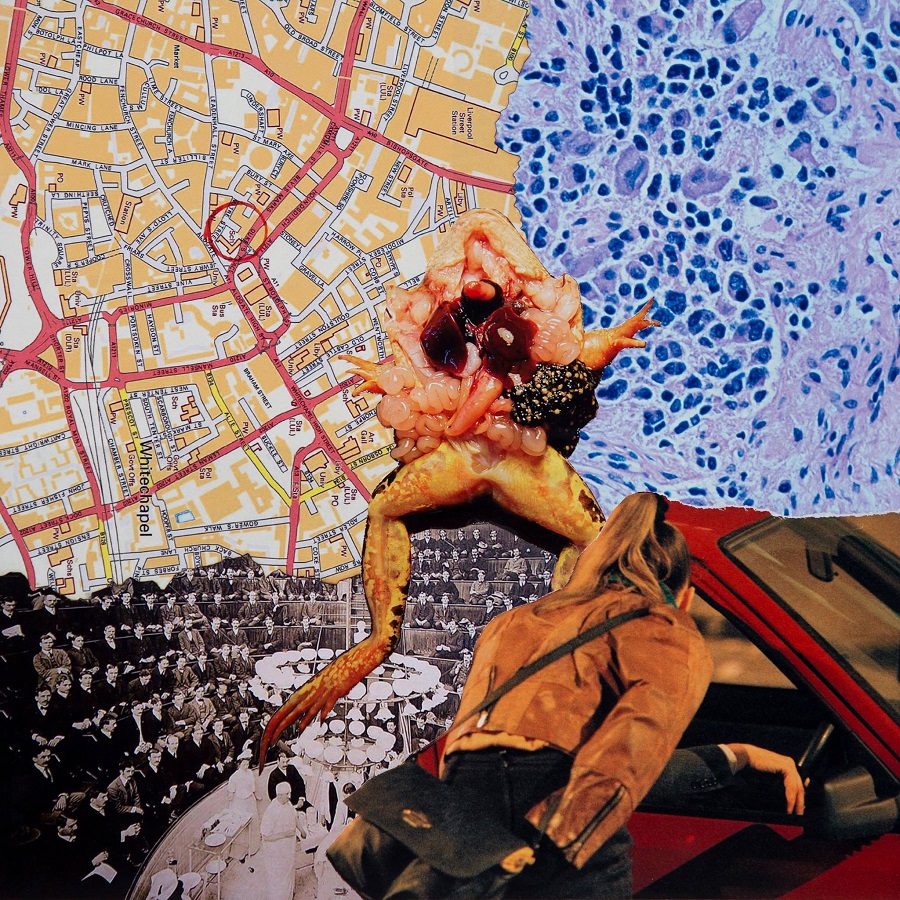
from Darkleaks – The Ripper Genome
Michael: You have since relocated to London, is the U.K. a more fitting home-base for your operations?
Martin: I’m closer to Karolina, and it’s of course much easier to run Infinity Land Press from here. I have two day jobs and I’ve never worked as much as I do now, but because of that I’m pricing the time I spend on my “real” work much higher.
Michael: Do you think the apocalypse is coming, if so how do you think it will happen?
Martin: Some kind of apocalypse is coming our way, but even the apocalypse isn’t the end…
Martin Bladh links: Official website, Infinity Land Press website, Infinity Land Press Facebook, IRM Facebook, Skin Area Facebook

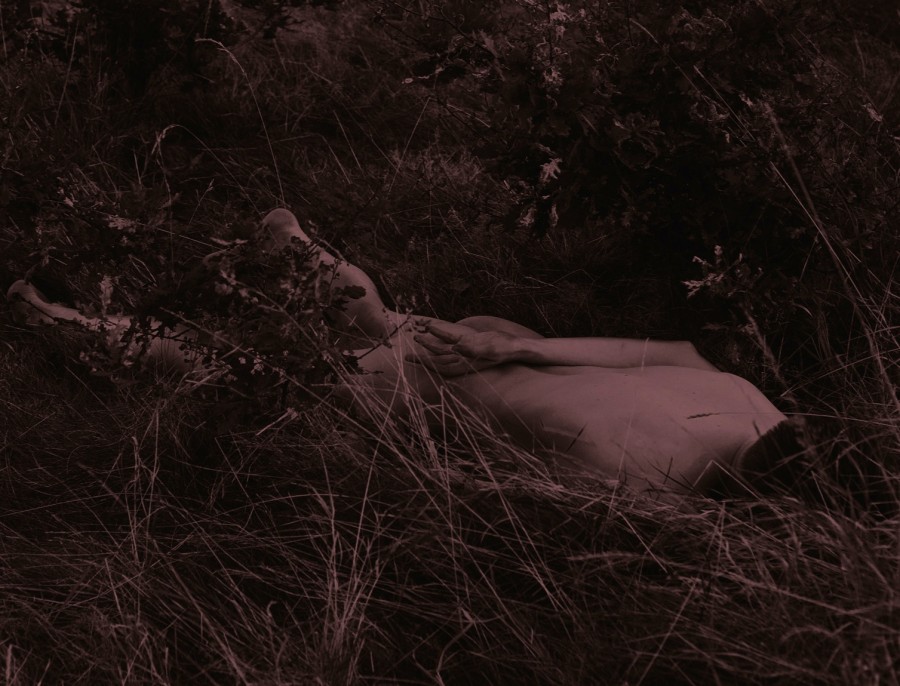
Leave a Reply